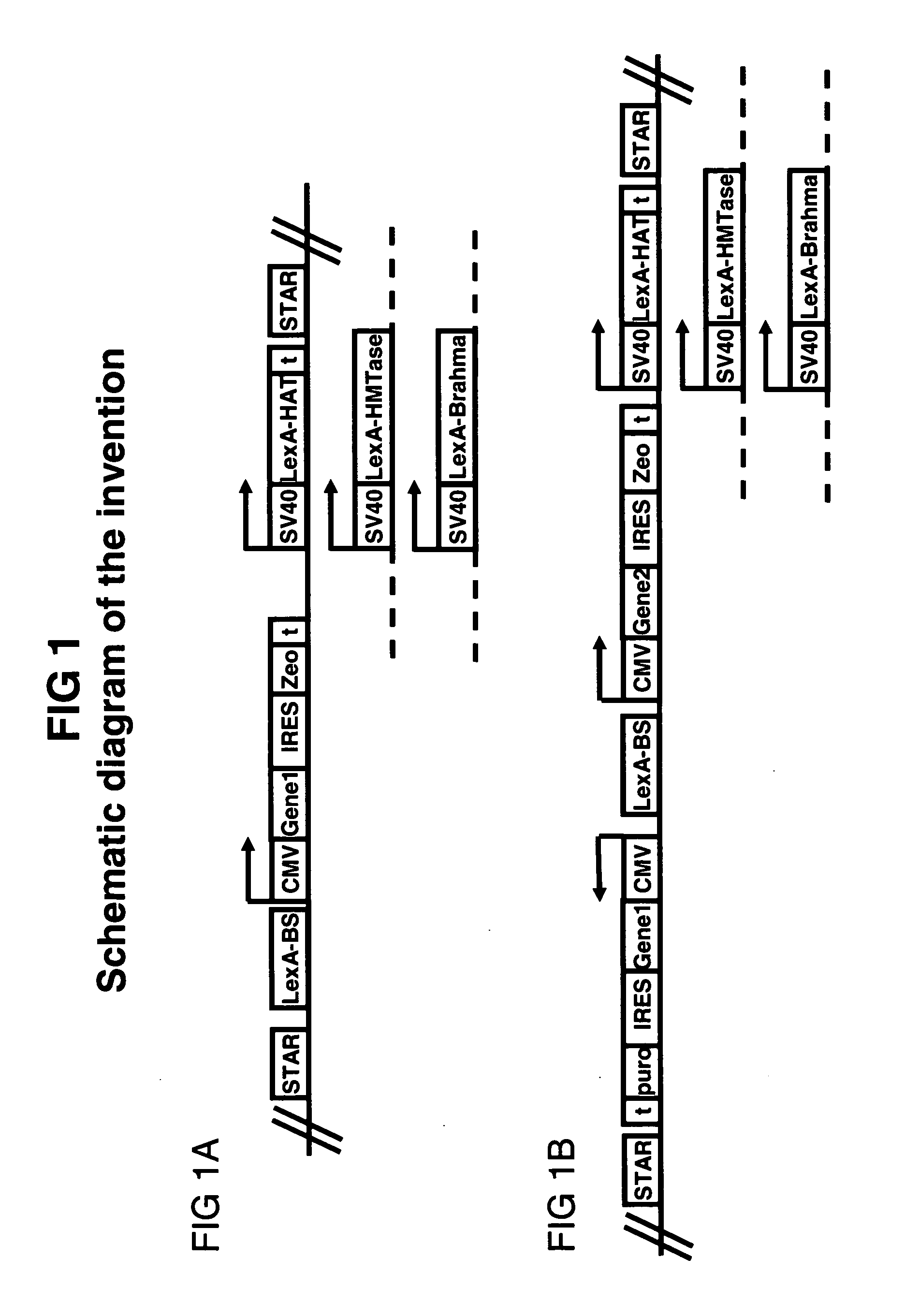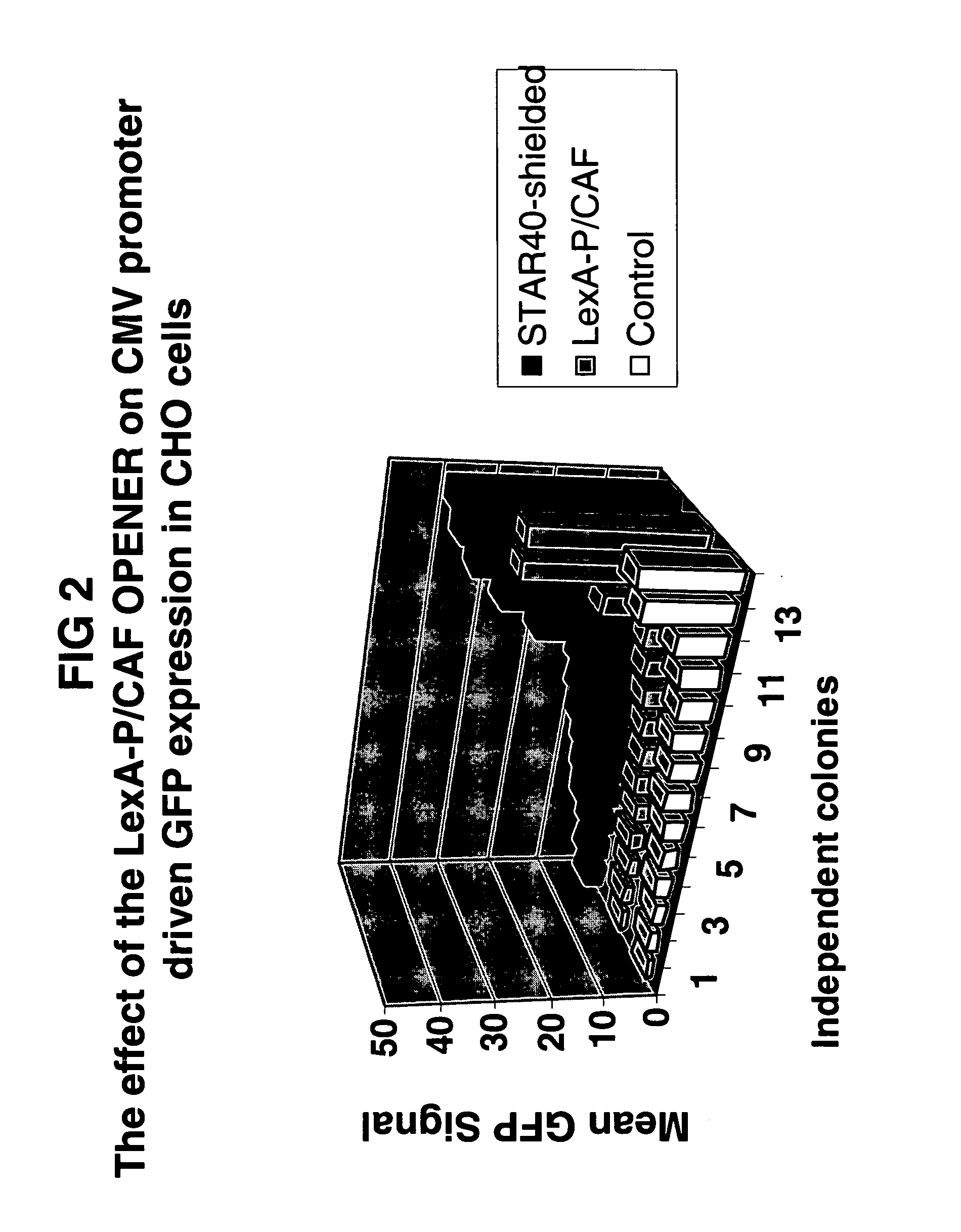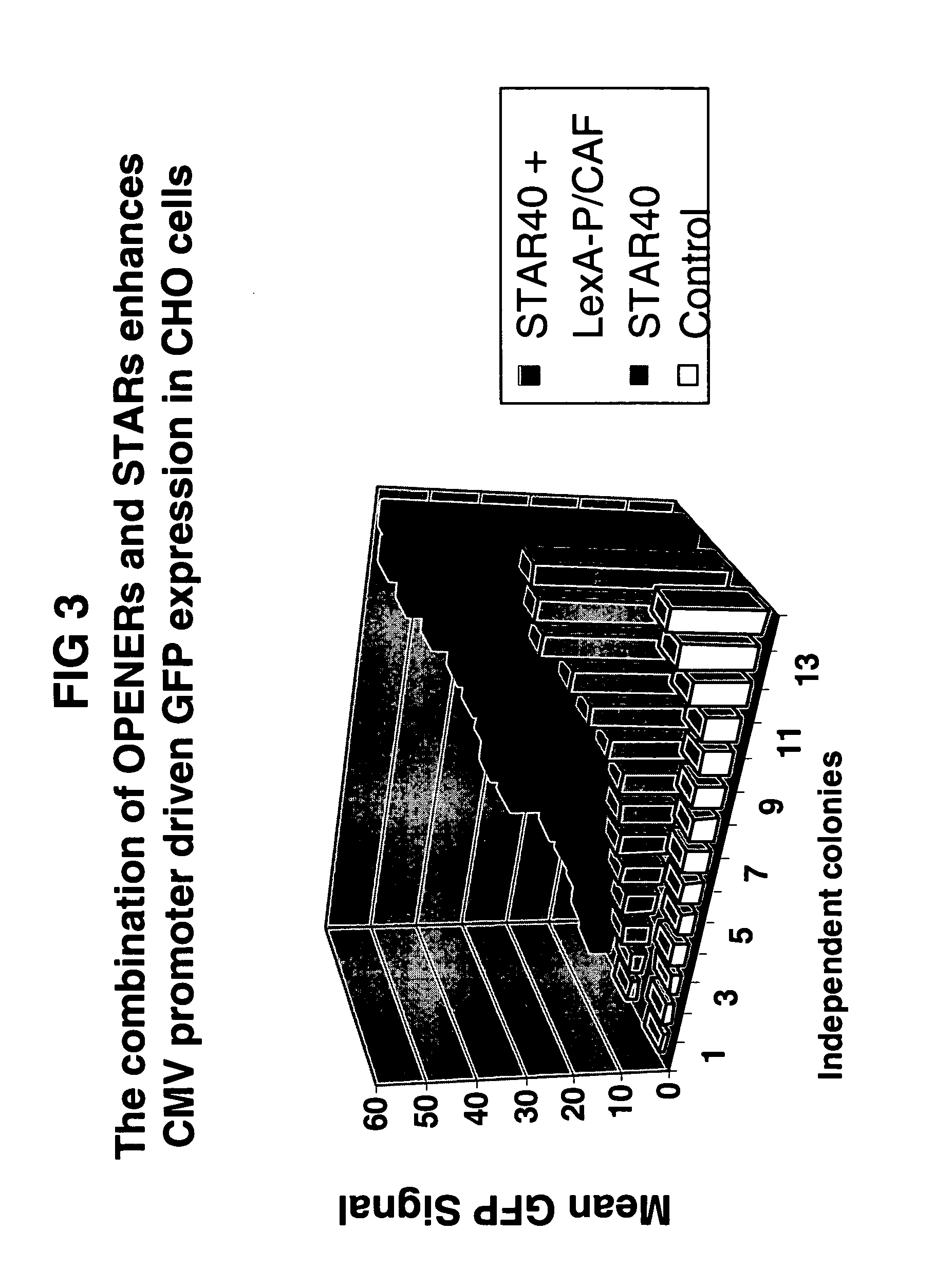Means and methods for producing a protein through chromatin openers that are capable of rendering chromatin more accessible to transcription factors
- Summary
- Abstract
- Description
- Claims
- Application Information
AI Technical Summary
Benefits of technology
Problems solved by technology
Method used
Image
Examples
example 1
Expression of LexA-HAT and LexA-Brahma and Brahma Proteins in CHO Cells
[0139] In one aspect, the invention applies chromatin openers to improve the predictability, yield and stability of transgenes in mammalian cell lines. Here, we introduce several chromatin openers into CHO cells and we describe the construction of the various opener constructs.
Materials and Methods
Plasmids
[0140] The construction of the pPlug&Play-d2EGFP-ires-Zeo (PP) vector is described below. Plasmid pd2EGFP (Clontech 6010-1) is modified by insertion of a linker at the BsiWI site to yield the pd2EGFP-link. The linker (made by annealing oligonucleotides GTACGGATATCAGATCTTTAATTAAG (SEQ ID NO:15) and GTACCTTAATTAAAGAT CTGATAT (SEQ ID NO:16)) introduces sites for the PacI, BglII, and EcoRV restriction endonucleases. This creates the multiple cloning site MCSII for insertion of STAR elements. Then primers gATCAgATCTggCgCgCCATTTAAATCgTCTCgCgCgTTTCggTgATgACgg (SEQ ID NO:17) and AggCggATCCgAATgTATTTAgAAAAATAAACAAA...
example 2
Chromatin Openers Improve the Level of Transgene Expression
[0149] In one asptect, the invention improves both the predictability and the levels of transgene expression for heterologous protein production, thus increasing the yield of the heterologous protein and reducing the number of colonies that have to be analyzed to obtain a high producer colony.
Materials and Methods
[0150] The tested construct consists of a bicistronic gene with the GFP gene, an IRES, and the Zeocin-resistance gene under control of the CMV promoter and a monocistronic gene encoding LexA-P / CAF under control of the SV40 promoter, but no STAR elements to flank the entire construct. The construct is transfected to CHO-K1 cells as in Example 1. Stable colonies are expanded before the GFP signal is determined on an XL-MCL Beckman Coulter flow cytometer. The mean of the GFP signal is taken as the measurement for the level of GFP expression and this is plotted in FIG. 2. The results are compared to colonies that ar...
example 3
The Combination of Chromatin Openers and STAR Elements Improves Predictability and Yields of Transgene Expression
[0152] Openers are combined with STAR elements as described in FIG. 1 and tested are the predictability and yield of transgene expression in stably transfected, individual colonies.
Materials and Methods
[0153] The tested construct consists of a bicistronic gene with the GFP gene, an IRES, and the Zeocin-resistance gene under control of the CMV promoter and a monocistronic gene encoding LexA-P / CAF under control of the SV40 promoter. The entire construct is flanked by STAR40 (FIG. 1A). The construct is transfected to CHO-K1 cells as in Example 1. Stable colonies are expanded before the GFP signal is determined on an XL-MCL Beckman Coulter flow cytometer. The mean of the GFP signal is taken as the measurement for the level of GFP expression and this is plotted in FIG. 3. Results are compared to colonies transfected with a construct containing no LexA-P / CAF gene and no STA...
PUM
| Property | Measurement | Unit |
|---|---|---|
| Acidity | aaaaa | aaaaa |
| Elongation | aaaaa | aaaaa |
| Nucleic acid sequence | aaaaa | aaaaa |
Abstract
Description
Claims
Application Information
 Login to View More
Login to View More - R&D
- Intellectual Property
- Life Sciences
- Materials
- Tech Scout
- Unparalleled Data Quality
- Higher Quality Content
- 60% Fewer Hallucinations
Browse by: Latest US Patents, China's latest patents, Technical Efficacy Thesaurus, Application Domain, Technology Topic, Popular Technical Reports.
© 2025 PatSnap. All rights reserved.Legal|Privacy policy|Modern Slavery Act Transparency Statement|Sitemap|About US| Contact US: help@patsnap.com



